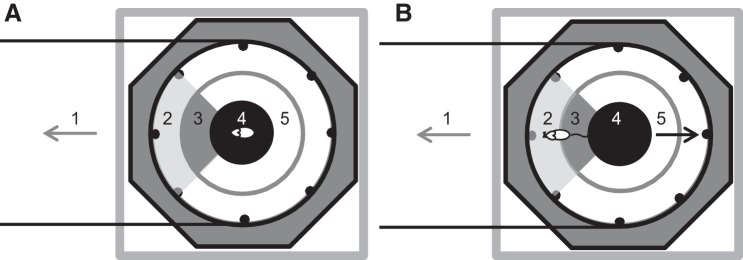Fig. 2.
Schematic of compensation. Zoning of the experimental arena as used for the compensation algorithm. Top view of the setup with the octagonal structure of the TFT-screens, positions of feeders (black dots), and the cylinder surrounding the experimental arena. The animal is located at the right end of a virtual corridor that extends to the left (1). A: the rat is in the center of the inner circle (4) and the compensation mechanism is inactive. B: the rat has left the inner circle (4), crossed the acceleration zone (3), and entered the outer circle (2), where counterrotation of the sphere is set to the maximum of 0.31 m/s. Directions of movement are indicated by arrows representing the animal (gray arrow) and the ball (black arrow). Note that in the example given, the animal is located at the right end of a virtual corridor. Therefore, compensation is only activated when the animal enters the left quarter zone (marked in gray). In the remaining three quarters of the arena (5), compensation is inactivated, so that the animal can walk up to and touch the surrounding wall without initiating movement of the sphere. Black horizontal lines indicate the accessible zone of the path.

